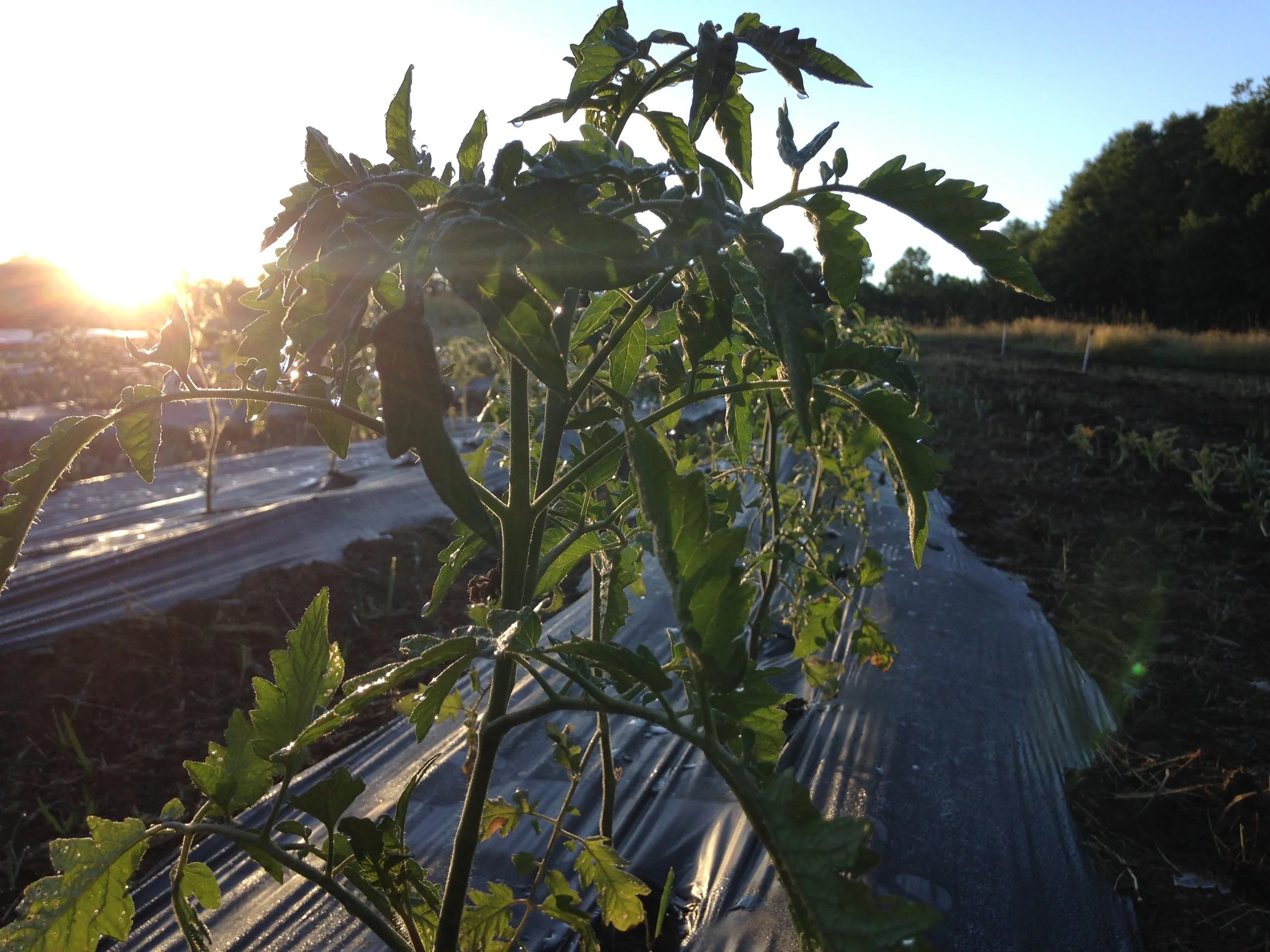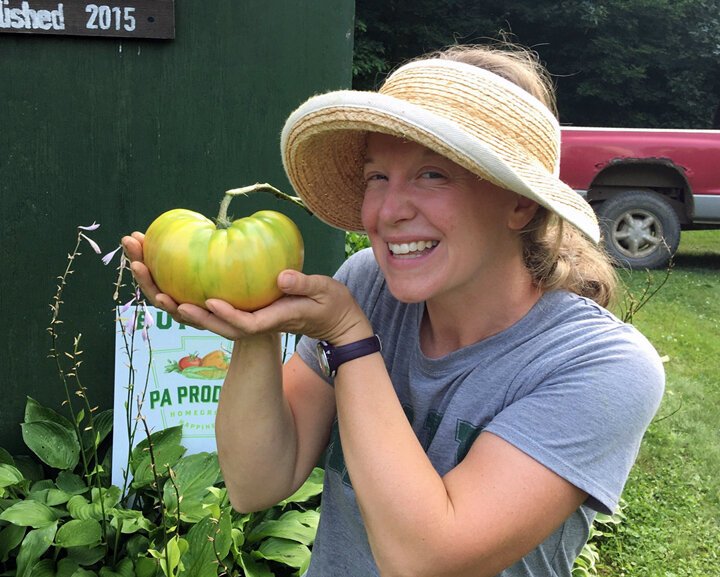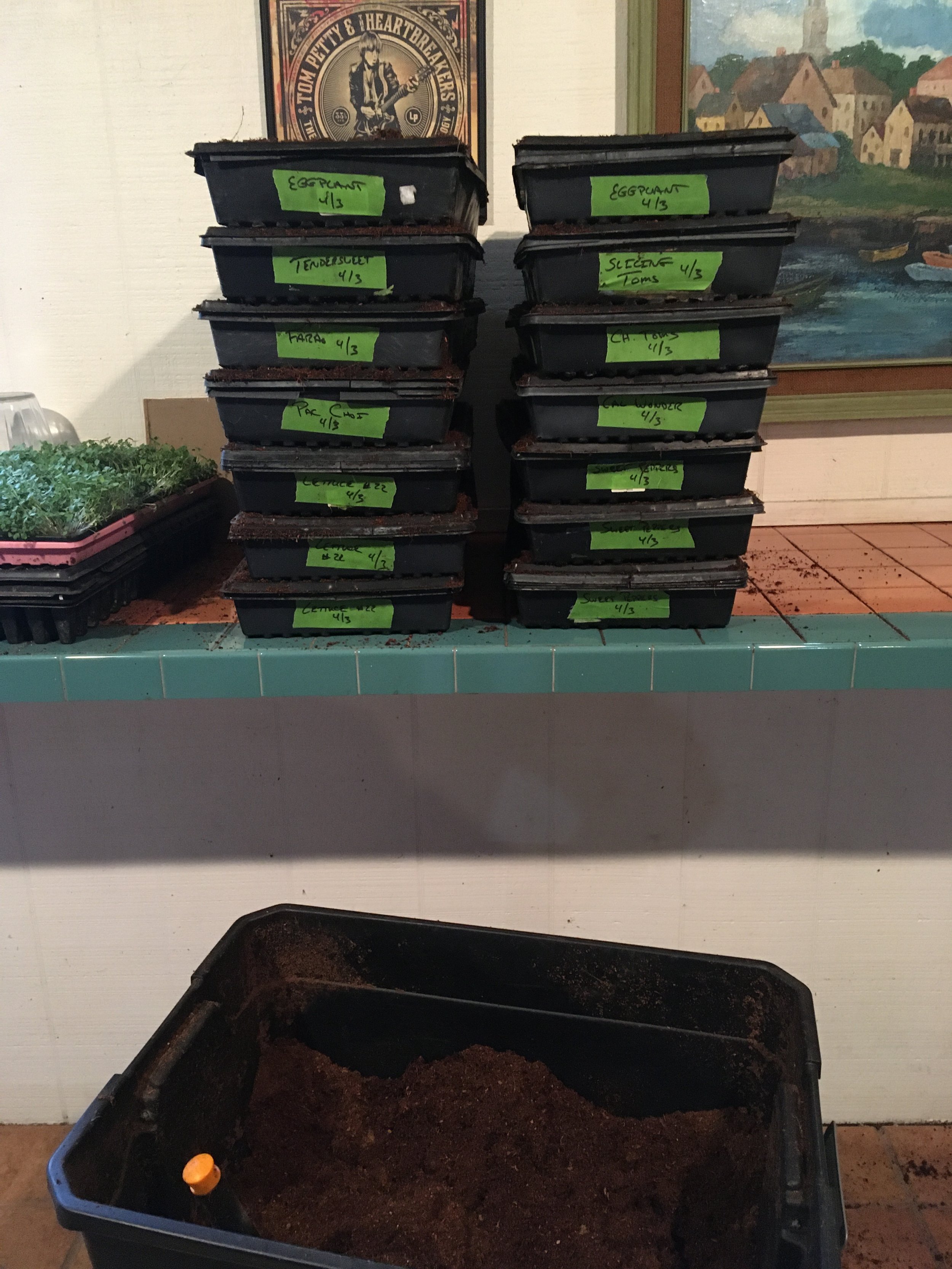I started drinking coffee around age 9. In my parents’ defense, they brew coffee so weak you can see through it. But ever since, I have loved - no, worshipped - coffee. My first solo outing as a kid was actually to a coffee shop. We were visiting my grandparents in Ohio, and there was a place a few blocks down the street. Little Stella slapped on her snap bracelets, stuffed the pages of her notebook-paper novel into what was no doubt a sparkly folder, and proudly walked downtown. It was an afternoon of pure bliss, and coffee and writing (productivity, actually) remained neatly zippered together in my mind for more than two decades after.
But I started to doubt the benefit of my relationship with coffee earlier this year after investing a lot of time into learning about women’s health. The most influential voice was Alisa Vitti, founder of Flo Living, and author of Woman Code. Her life’s work is helping women sync with the four phases of their monthly cycle.
In her lectures and on her website, she advises women to quit caffeine. While I followed many of the recommendations in her book, and was happy with the outcomes, I let the caffeine warning fall on deaf ears because I absolutely did not want to give it up.
As the months passed, Vitti’s advice showed me how delicate a balance eating and drinking can be, and this pushed me toward suspicion when it came to the psychoactive beans that had started all my days for the past 27 years.
Vitti’s main argument against caffeine has to do with blood sugar. She writes on Flo Living that drinking coffee before breakfast (as I usually did) can “sabotage your blood sugar.” Vitti’s been saying this for years, but her assertion is now backed by research published in the British Journal of Nutrition.
Unstable blood sugar is detrimental for a long list of reasons. In the short term, when we begin the day with a spike, it sends us on a rollercoaster of moods and cravings for the rest of the day, Vitti says. It also sets off a cascade of hormone imbalances that have a big impact on a woman.
Vitti puts it this way:
“The problem is when blood sugar rises too high, as is the case when we eat a lot of sugar or, according to this new study, when we have coffee before breakfast. Blood sugar surges and so does insulin, and those spikes interfere with ovulation, which messes up progesterone production and contributes to one of the most common, and most troublesome, hormone imbalances: estrogen dominance.”
And on top of that:
“Overexposure to sugar and insulin can also contribute to fat storage and weight gain, and that can make estrogen dominance even worse. Add all this together with the synthetic estrogens we’re exposed to in the environment, and you’re set up for progesterone deficiency, estrogen dominance, and symptom-causing hormone imbalances. Hormone imbalances are why women in their reproductive years experience problems like PMS, acne, bloating, infertility, heavy or irregular cycles, and other hormone issues.”
Caffeine also spikes cortisol (the stress hormone) production in women, Vitti says, and this also leads to multiple issues.
After learning all of this, I began to accept that coffee might have me trapped in a vicious cycle.
As writer Michael Pollan explains in his book, This Is Your Mind on Plants, the main reason that morning cup of coffee feels like throwing open a sunny window to the day has less to do with caffeine’s stimulant nature, and more to do with how that first taste is actually relieving our first withdrawal symptoms. Pollan abstained from caffeine for three months and wrote all about it in his book, along with an illuminating history of coffee.
When we eat or drink caffeine, the caffeine molecule fits in a receptor in our central nervous system. By taking up this position, it blocks the neuromodulator that would naturally link up with that receptor. The particular neuromodulator that caffeine disrupts is called adenosine. Adenosine, when able to bind with its receptor, has a sleep-inducing effect on the brain. Throughout the day, adenosine builds up in our bodies and prepares us for rest. Actually, it pressures us to rest. So when caffeine swoops in and binds with adenosine’s receptors, it interferes with our desire to sleep. Spend even a few minutes researching how sleep works, or go a few hours without it in a night, and you know exactly why this is problematic. Caffeine insidiously presents itself as the cheerful solution to our problems each new morning, when it’s actually the agent of all the chaos.
Vitti would add that caffeine’s tampering with sleep also throws a woman’s hormones off kilter, leading to a wave of problems.
But as with just about any health matter, the more research you do, the more confusing and conflicting the information gets.
In Bill Bryson’s fascinating book, The Body, I noticed that he has only one line about caffeine. Caffeine “slightly counteracts” adenosine’s effects, he writes, “which is why a cup of coffee perks you up.” Even if this is true, I certainly drank a lot more than a single cup in a day, so my reality likely leaned toward Pollan’s more alarmist findings.
For most people, the quarter life of caffeine is about 12 hours. That means that 25 percent of the caffeine you consumed at noon is still coursing through you at midnight.
And then there’s research that supports coffee’s possible health benefits. At first glance, these studies may seem to let coffee off the hook, but Vitti points out that the information we have about coffee’s health benefits is derived from mostly scientific research that focuses on men.
Ultimately, I decided to try Vitti’s advice. I went cold turkey in August 2021. Here’s a daily journal of my withdrawal experiences, and an update on six months later.
NO-CAFFEINE JOURNAL
DAY 1 - Started the morning optimistic about my caffeine-free adventure. I drank two cups of caffeine-free tea, and ate a big breakfast. I did a few chores and then made lunch. Then, at 1 p.m. EST, the ground split open under my feet, spewing forth hellfire. That’s how it felt anyway. I was tired to the bone and had a pounding headache. The light through the windows hurt my head and I was in a fog. The world literally didn’t look right, and that was the weirdest part. There was an actual blueish haze everywhere. After a nap, the headache was so bad I made myself a damned cup of coffee and took an ibuprofen. The headache eased, but I remained super sluggish. These are all common caffeine withdrawal symptoms. Caffeine withdrawal, I later learned, is actually included in The Diagnostic and Statistical Manual of Mental Disorders (the DSM-5).
DAY 2 - The cold turkey approach was clearly a no-go, so I had two cups of caffeine-free tea before breakfast, and one cup of caffeinated coffee with my meal. I drank it quickly and didn’t tote my mug around all morning as I usually did. I had a slight headache and felt a little tired. I made a point to stay hydrated and took an ibuprofen.
DAY 3 - No time for lollygagging with tea this morning. Needed to beat the heat and dig potatoes and pick tomatoes. One cup of coffee with breakfast. (Jason had bought black cherry coffee - my favorite!) No headache or brain fuzziness. No need for ibuprofen. Energy was high.
NEXT THREE DAYS - I kept the single cup of coffee with breakfast routine.
DAY 7 - I made myself a 3/4 cup of coffee with breakfast, took a few sips, then forgot about it. I probably only drank a 1/2 cup.
DAY 8 - Skipped coffee altogether. Around 3 p.m., I was extremely tired. It was Saturday, so I took a long nap.
DAY 9 - Skipped coffee again. Made myself a golden coconut milk tea (recipe below).
THE FIRST FEW MONTHS…
The list of potential caffeine withdrawal symptoms is a real bummer. In addition to temporary headache and fatigue, there are some truly dispiriting ones, like decreased focus and motivation, and a loss of confidence. Those were the three that freaked me out. As a writer, concentration and the desire to move projects forward is critical; plus, I need to live in a bubble of delusion that convinces me what I’m doing is worthwhile.
In those first few months, Pollan captured exactly how I felt in his own description of life after caffeine. He said he felt “like an unsharpened pencil.” He wrote that “this new normal world seemed duller to me. I seemed duller, too.” That was me to a T.
I do have an addendum to these first couple of months. This was far from my best year, so I don’t know if my sudden depletion of joie de vivre was thanks to a lack of caffeine, or just life in general kicking me in the pants. During that same time, I also ended up with a virus (not Covid) that led to bronchitis, and was sick for about five weeks, so my low energy could have just as easily been from illness than lack of caffeine. Bronchitis and no caffeine; I was barrels of fun.
My biggest fear was that cutting caffeine would permanently impact my creativity. A little research ahead of time would have assuaged this concern. Since caffeine withdrawal did decrease my motivation and made me feel duller, the matters became conflated in my mind. In other words, no coffee, no think-y.
HOW ABOUT NOW?
It’s been six months since my last sip of caffeinated coffee or tea. In the mornings, I drink hot lemon water (it’s seriously refreshing), or sometimes decaf with a small amount of cream. Most decaf coffee actually does contain a trace amount of caffeine. Decaffeination removes around 97 percent or more of the caffeine in the beans. For comparison, a cup of decaf typically has about 2 mg of caffeine, whereas a cup of regular coffee has about 95 mg. When I do drink decaf in the morning, I drink it with breakfast.
Jason still has his morning psychoactive cup, and he buys the most delicious smelling local beans. I enjoy the aroma of the coffee each morning, but I don’t feel a longing to brew any for myself.
The overarching sense of dullness eventually wore off. I don’t feel like an unsharpened pencil anymore, but I do feel like I’ve undergone some kind of softening. Not intellectually (that would be bad!), but there’s been a change in my overall mood. There’s been an internal quieting. Most noticeably, I’m less irritable, especially with my young son. Now, again, my life has calmed down from last year, so maybe less stress in general is the reason for these changes. I don’t know, but six months out, I’m not interested in finding out. To put it simply, I’m over coffee.
I’ve come to appreciate my baseline energy level. There is a sense of peace in knowing that the energy I have is a credit to sleep and nutrition and exercise, rather than a drug.
A FEW RECOMMENDATIONS IF YOU WANT TO QUIT
1.) Don’t go cold turkey. Ease off caffeine. This might take you a week or two or more, depending on how much caffeine you eat/drink.
2.) Have a go-to substitute drink, like caffeine-free tea or lemon water. Check out the golden coconut milk recipe below.
3.) Find yourself a quality decaf. I’d recommend a local roaster and whole beans. Remember, most decaf does have a small amount of caffeine. I spend a little extra money for the water process decaf vs. the chemically-processed decaf. A big part of my coffee habit was the comfort in sitting down with a nice, hot, creamy cup, and I found myself missing it most when I was say, settling in to call a friend, or on a rainy afternoon with a book. The decaf option fills this need perfectly fine.
GOLDEN COCONUT MILK
About 1 1/2 cups of water
2 tablespoons coconut milk
1 teaspoon turmeric
Pinch of pepper
Cinnamon, to taste
Nutmeg, to taste
Honey, to taste
DIRECTIONS: Heat water and coconut milk. Add turmeric, pepper, cinnamon, nutmeg, and honey. Stir.
~ Stella



















